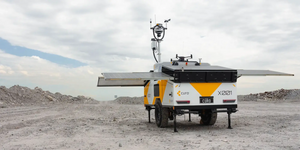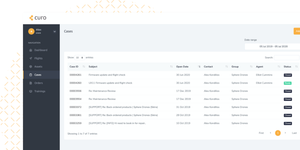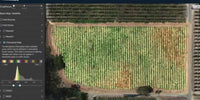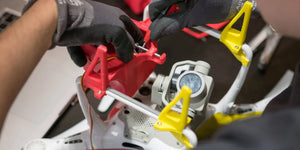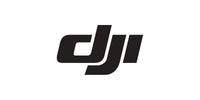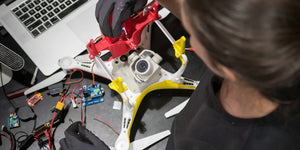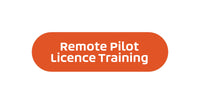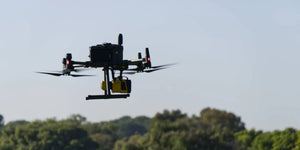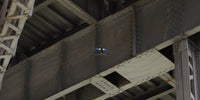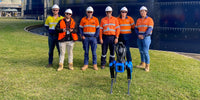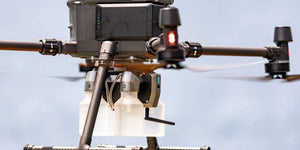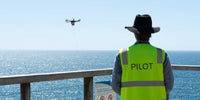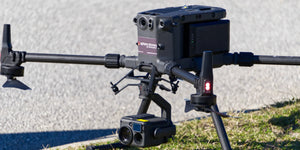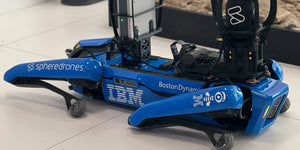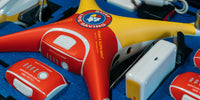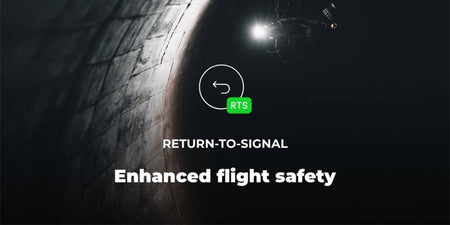Inspectors working in the oil and gas industry have been realising significant benefits from using drones in their inspections for several years now.
For external inspections, oil and gas professionals have been using outdoor drones to collect visual data reflecting the condition of assets, avoiding the need to collect this data by physically standing in front of them.
And more recently, they’ve been using outdoor drones for gas leak detection. By equipping a drone with an optical gas imaging sensor (OGI) and a methane detection laser, an outdoor drone can identify both where leaks are present (the OGI does this) and the type and quantity of gas being leaked (the laser does this).
For internal inspections, indoor drones like Flyability’s Elios 2 have been helping inspectors working in oil and gas to collect visual data inside assets that require periodic inspections, such as those required by API guidelines.
Some of the most common assets where indoor drones are being used for internal inspections include:
- Chimneys and smokestacks
- Offshore rigs
- FPSOs
- Drilling ships
- Jetties
- Storage tanks
- Refineries
The traditional approach for inspecting these assets would require an inspector to physically enter them, exposing them to all the potential hazards that come with confined space entry.
Using a flashlight and camera, the inspector would move through the asset recording visual data and looking for possible flaws that might need further inspection or maintenance.
In many cases, inspectors have to stand on scaffolding or use rope access to conduct these internal inspections, exposing them to further hazards.
But high-quality indoor drones are helping reduce—and in some cases eliminate—the need for inspectors to enter these assets to collect visual data, making internal inspections safer and cheaper.
Here are the seven key benefits of indoor drones for internal inspections in the oil and gas industry.
1. Reduced Downtimes
Indoor drones can significantly reduce turnaround times for internal inspections by removing the need for building temporary structures, such as scaffolding.
Just setting up and taking down scaffolding can take several days, or even weeks—time in which the asset has to be down.
During a diesel tank inspection at an oil depot, inspectors were able to reduce the amount of time required for the inspection from two weeks to just four hours using the Elios 2.
Every hour of downtime represents a significant loss of revenue, so avoiding 13 days and 20 hours of extended downtime meant a significant savings for the depot.
2. Safety
Inspectors conducting internal inspections in the oil and gas industry face confined space entry, work at height on scaffolding, and rope access, all of which expose them to potential hazards that could seriously injure or even kill them.
Indoor drones significantly reduce the need for inspectors to face these hazards.
By sending a drone into the asset instead of themselves, inspectors can collect visual data remotely while standing safely outside, improving the overall safety of the inspection by removing the hazards listed above.
Further, if maintenance personnel need to enter the asset to address flaws found during the inspection, their time inside it will be reduced.
Thanks to the visual data collected by the drone, they’ll know exactly where to work once inside. And if scaffolding is needed, they’ll know right where to place it.
3. Savings
In the oil depot mentioned above, the cost for the inspection was reduced by 96% using an indoor drone.
Savings like these are normal.
Tüpraş, the largest energy company in Turkey, reduced its downtime for an FCC unit inspection by two and a half days by using an indoor drone. The resulting savings from the downtime reduction was estimated at close to half a million dollars.
Indoor drones also eliminate the need for scaffolding for visual data collection.
This represents significant savings, since the cost of materials and labor required to erect and take down scaffolding can be tens or even hundreds of thousands of dollars—all for a single inspection.
4. Access
An indoor drone can easily access tight, confined spaces and collect visual data reflecting the conditions there. In fact, that’s exactly what indoor drones were designed to do.
Because they’re surrounded by a protective cage and designed to be collision tolerant, indoor drones can bump into surfaces and continue flying.
This feature lets inspectors slide them along a wall and fly right up to a surface, allowing them to get a clear vantage point so they can see whether any defects are present.
This kind of access can have a big impact on savings and safety for oil and gas operations.
In an FCC unit inspection, for example, inspectors typically have to cut a hole into the unit and rappel inside of its cyclone and riser using ropes.
But an indoor drone removes the need for inspectors to go into the unit, as well as the need for a hole to be cut into it to allow access for manned entry.
5. Increased Frequency of Inspections
Because indoor drones can quickly collect visual data inside of assets that are hard to access physically—like storage tanks, or an FCC unit—they can be used for quick spot checks.
Being able to quickly and regularly get visual data on the condition of an asset can lead to improved maintenance procedures overall, ultimately resulting in reductions not only of scheduled downtimes but also of unscheduled downtimes, which might take place due to equipment failure.
6. High Quality Visual Data
Inspectors in the oil and gas industry are using indoor drones to get high quality visual data showing minute details inside the assets they’re inspecting.
Flyability’s Elios 2 provides high definition 4K video and high-quality images, along with stabilisation and unique lighting features to let pilots home in on important details in the imagery they capture, further improving the quality of visual data they collect.
High quality visual data like this can provide insights for operations, engineering, survey, and safety departments within an oil and gas operation, which can then be used in the ongoing maintenance of an asset.
7. Data Localisation
Inspector 3.0 is Flyability’s software made specifically for inspection professionals.
In the software, inspectors can pinpoint the location of defects found in their inspection footage so that they can return to them in future inspections or share them with other stakeholders in the maintenance process.
Source: Flyability
